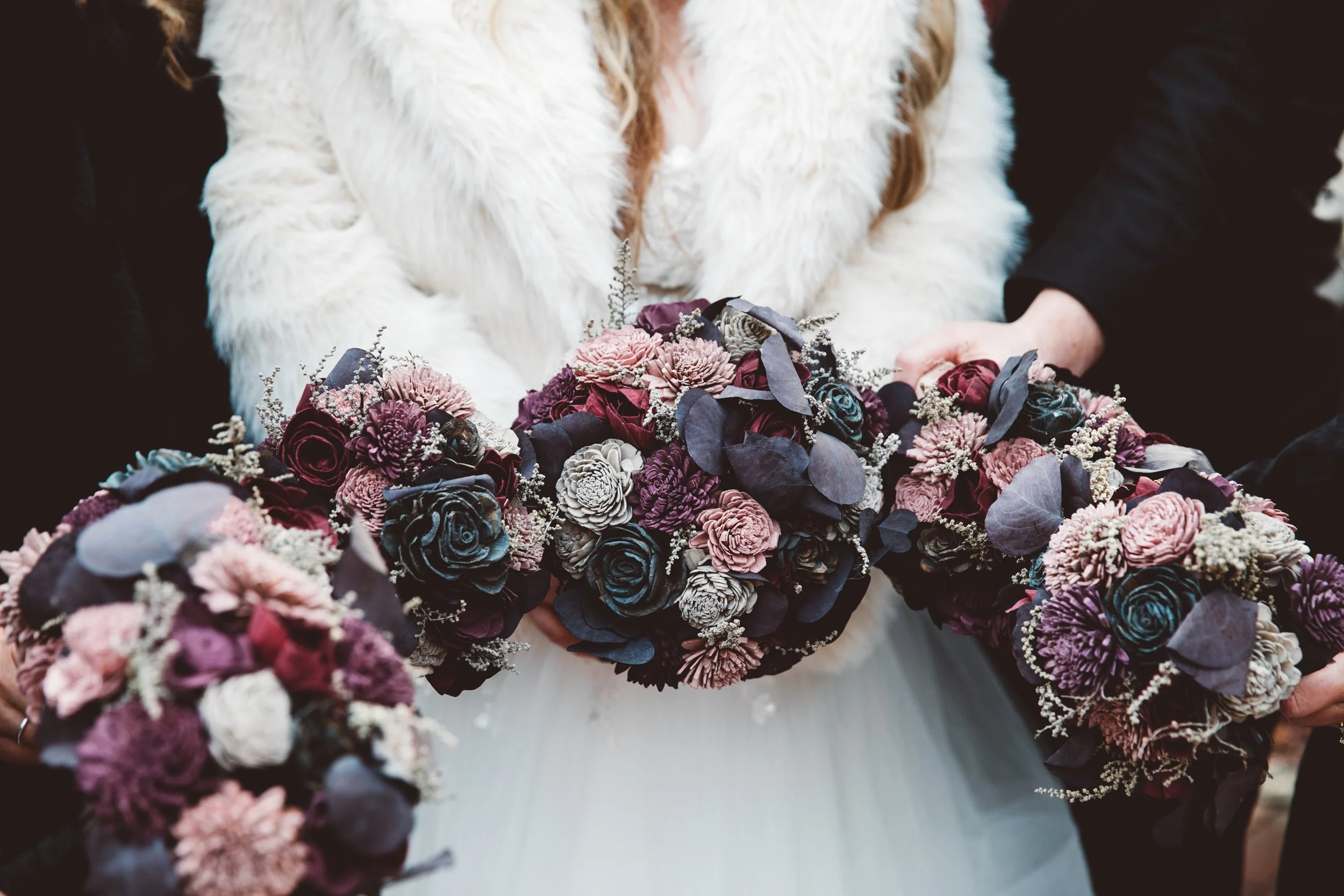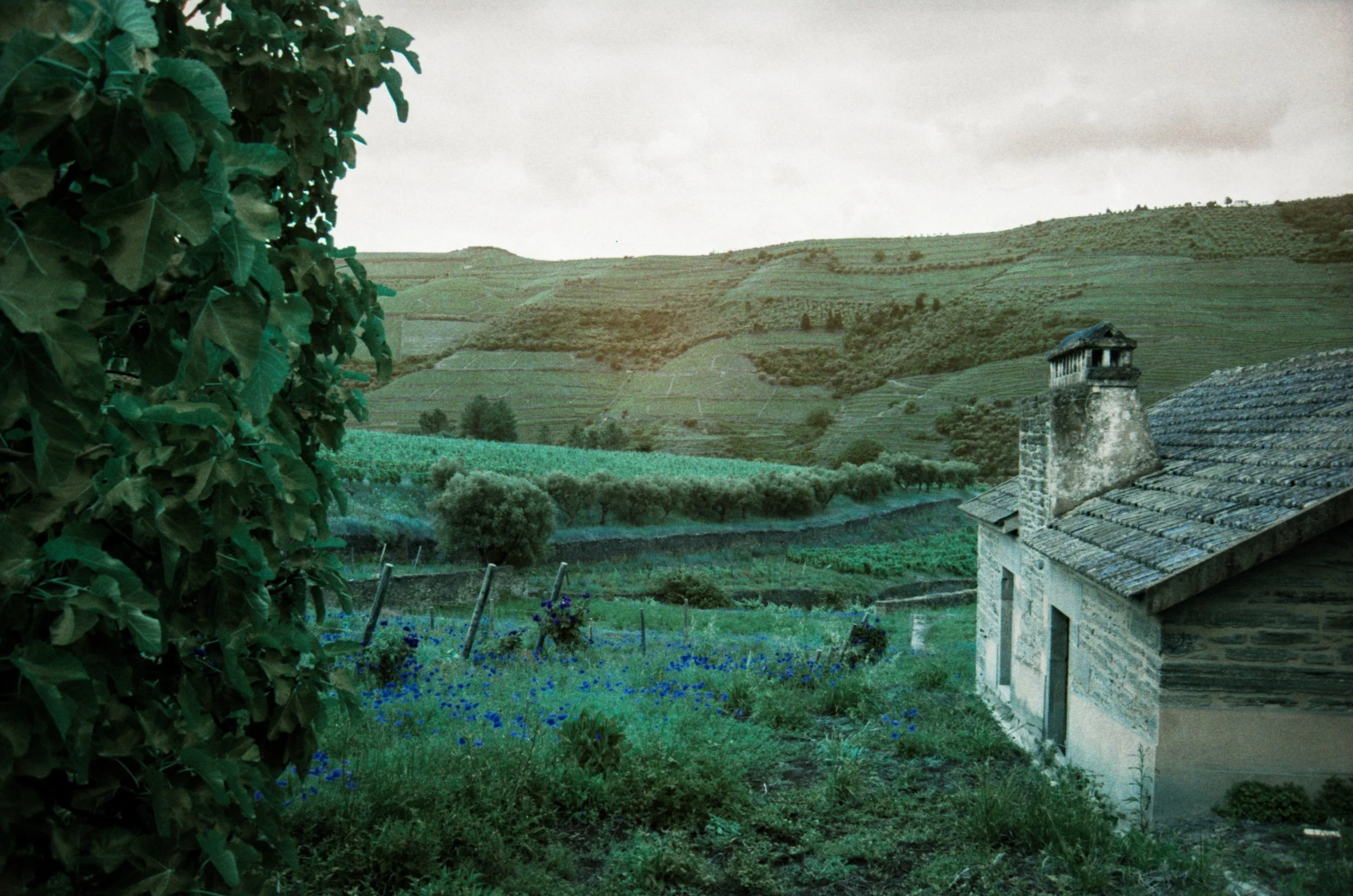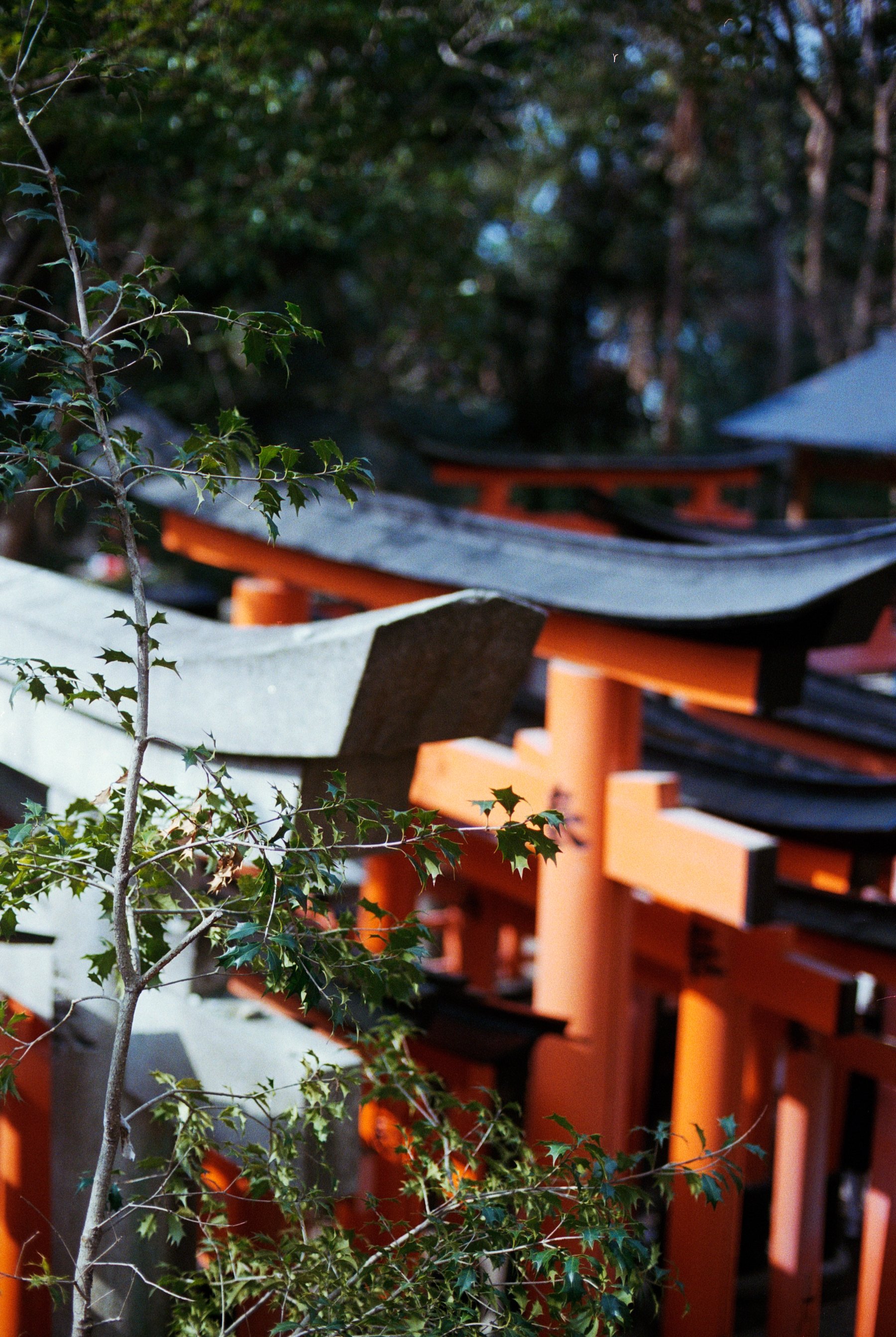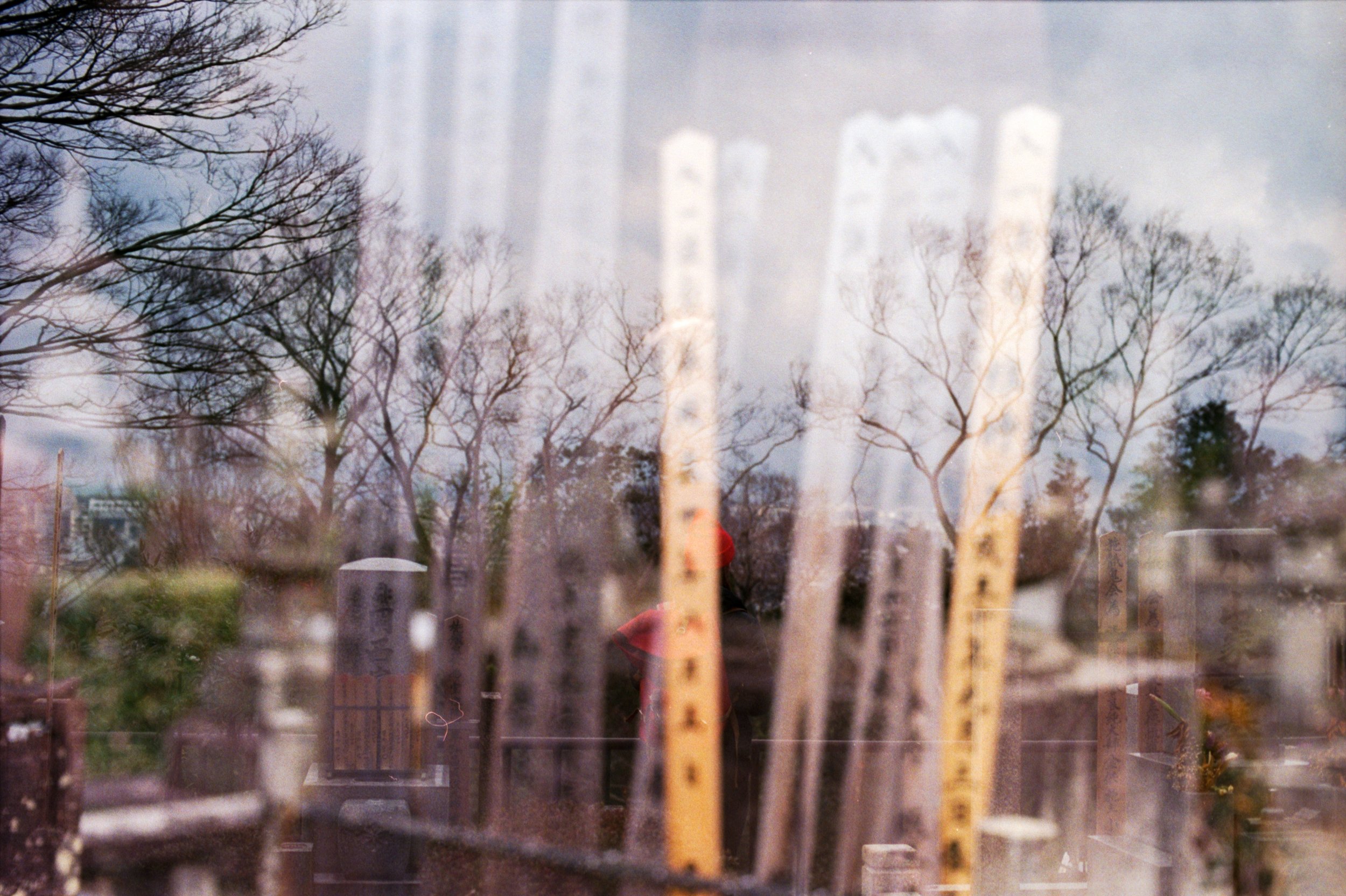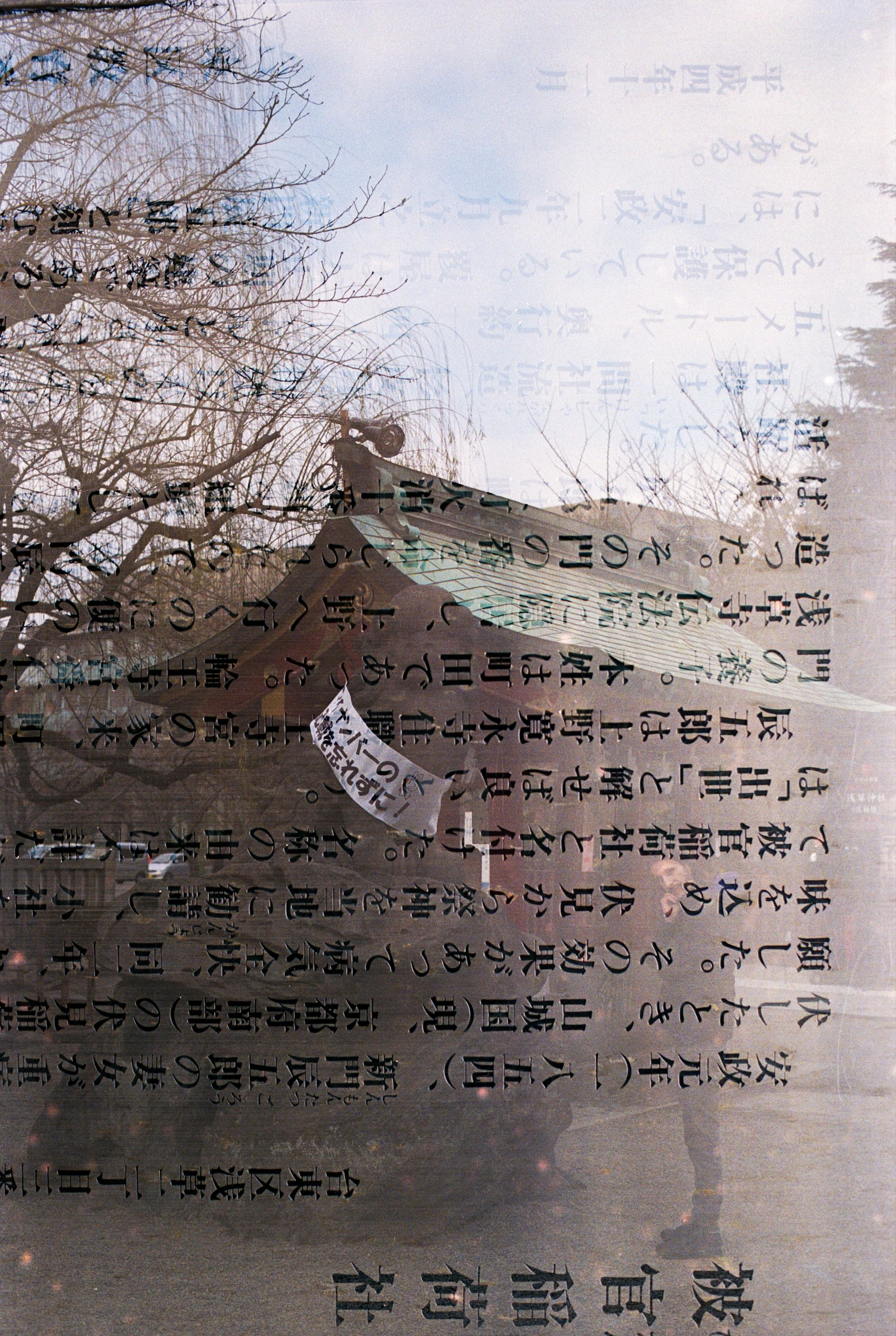You guys know I love LomoChrome Purple film in both 35 mm and medium format), but in the past I had only tried the LomoChrome Turquoise in 120 format. I finally purchased a roll of 35 mm Turquoise film and took it with me to Portugal! I used my trusty Minolta Maxxum STsi (one of my favorite 35 mm travel cameras) and took photos on our all-day bus tour in the Douro Valley and all throughout Porto. I’m kind of obsessed with the results! I love any film that adds a surreal atmosphere to my images and this film definitely does that. Plus, the Minolta Maxxum STsi has a panorama setting, which is perfect for traveling and allows me to capture wide landscapes and unusual compositions. You can read more about that camera on my blog here!
As you’ll see in the sample photos below, skin tones typically show up as blue, which is super unique and strange. If you’re looking for a film to push you out of your comfort zone and create an alien world, this is it! I love the way it looks with architecture, particularly. It’s very moody and cinematic, with quite a bit of grain, especially with multiple exposures. It also seemed to do decently well in low light situations. I probably wouldn’t use this film for a typical wedding or portrait client, but I would definitely consider it for a musician or artist who are looking for stand-out portraits.
I still think I might like the LomoChrome purple film better, but it’s always fun to try something new. One of the reasons I love Lomography so much is because of their fearlessness when it comes to creating new and unique films. I haven’t really found anything out there on the market that resembles the LomoChrome Purple or Turquoise films. They are truly unique.
If you’re feeling bold and adventurous, here are a few of my favorite unique Lomography films! Make sure to scroll to the bottom of this post to see the rest of the images I took with the LomoChrome Turquoise film in Portugal!
LOMOCHROME PURPLE ISO 100-400 FILM
Purple 35mm on Amazon
Purple 120 film on B&H Photo
Purple Reloadable 35 mm camera on Amazon
Purple 110 on Adorama
LOMOCHROME TURQUOISE ISO 100-400 FILM
Turquoise 35mm on B&H Photo
Turquoise 120 film on B&H Photo
Turquoise Reloadable 35 mm camera on Amazon
LOMOCHROME REDSCALE FILM
Redscale XR 50-200 120mm on Amazon
Redscale XR 50-200 35mm film on eBay
LOMOCHROME METROPOLIS FILM
Metropolis 35 mm on Amazon
Metropolis Reloadable 35 mm camera on Amazon
Metropolis 120 film on B&H Photo
UNIQUE LOMOGRAPHY BLACK AND WHITE FILMS:
Earl Grey 35 mm film on Amazon
Lady Grey 120 film on Amazon
Lady Grey 35 mm on Amazon
Berlin Kino 400 35mm film on B&H Photo
Berlin Kino 400 120 film on eBay
If you found this post helpful or inspiring, I’d love it if you considered signing up for my Patreon! For as little as $1 a month, you’ll get early access to all of my YouTube videos, plus tons of photos that I don’t post anywhere else. Depending on which tier you choose, you could also receive seasonal prints and/or discounts! I always use all of the proceeds towards cameras, film & processing. Find out more here!
If you have any questions, I’m always happy to help! You can contact me here, or leave a comment below! Thanks so much for stopping by! Have a magical day!
<3 Myles Katherine













